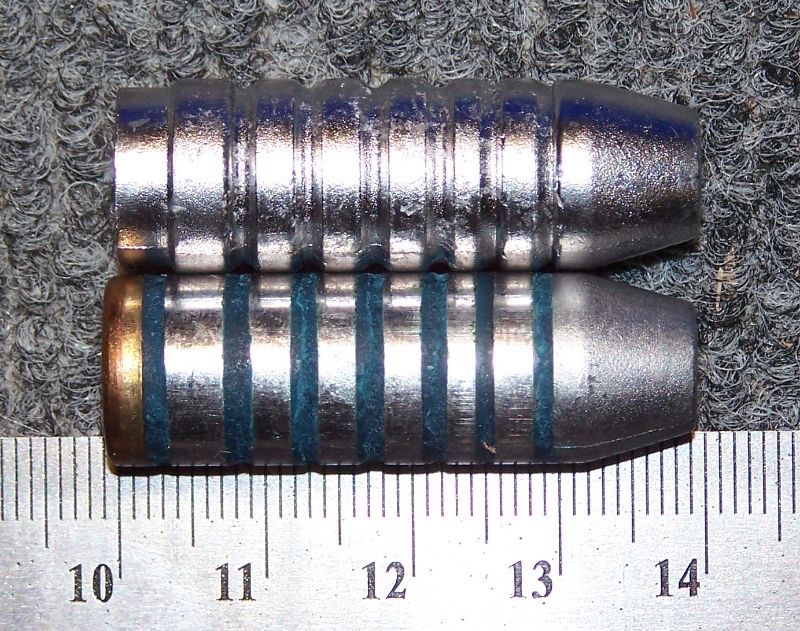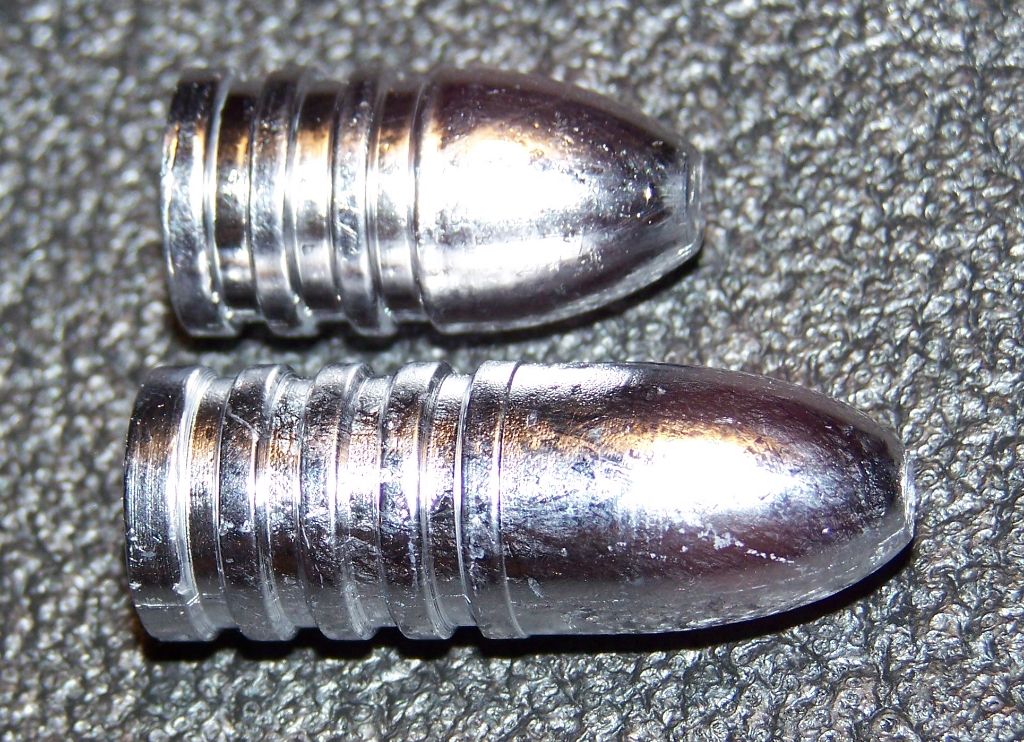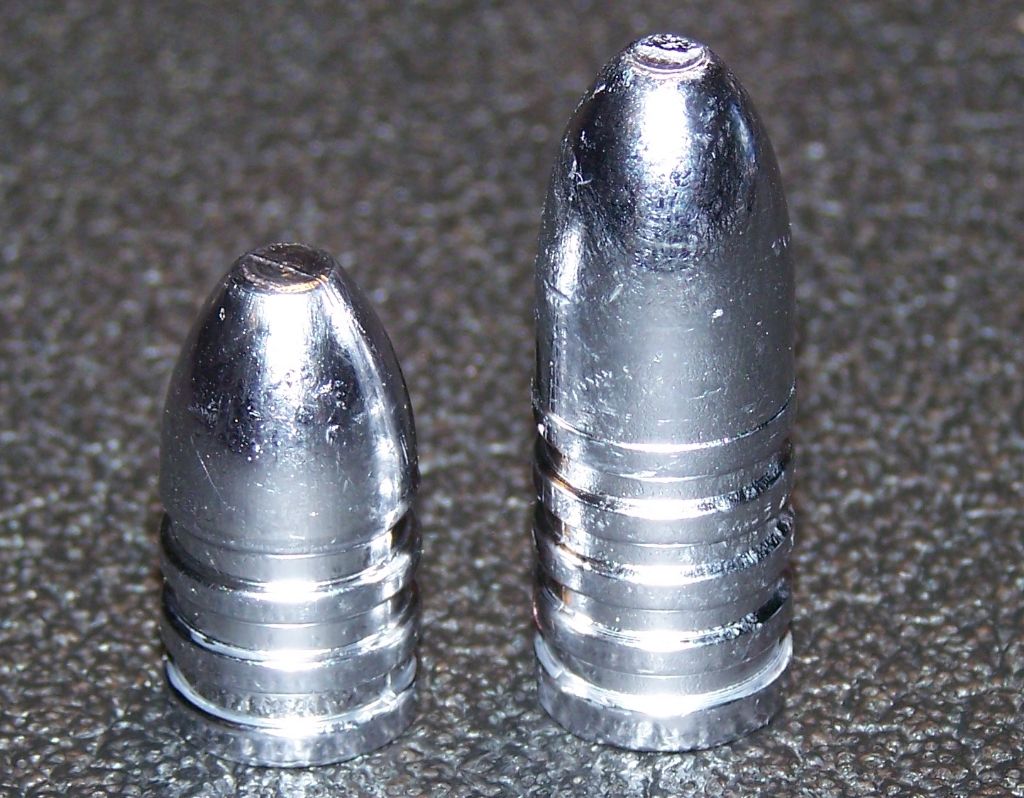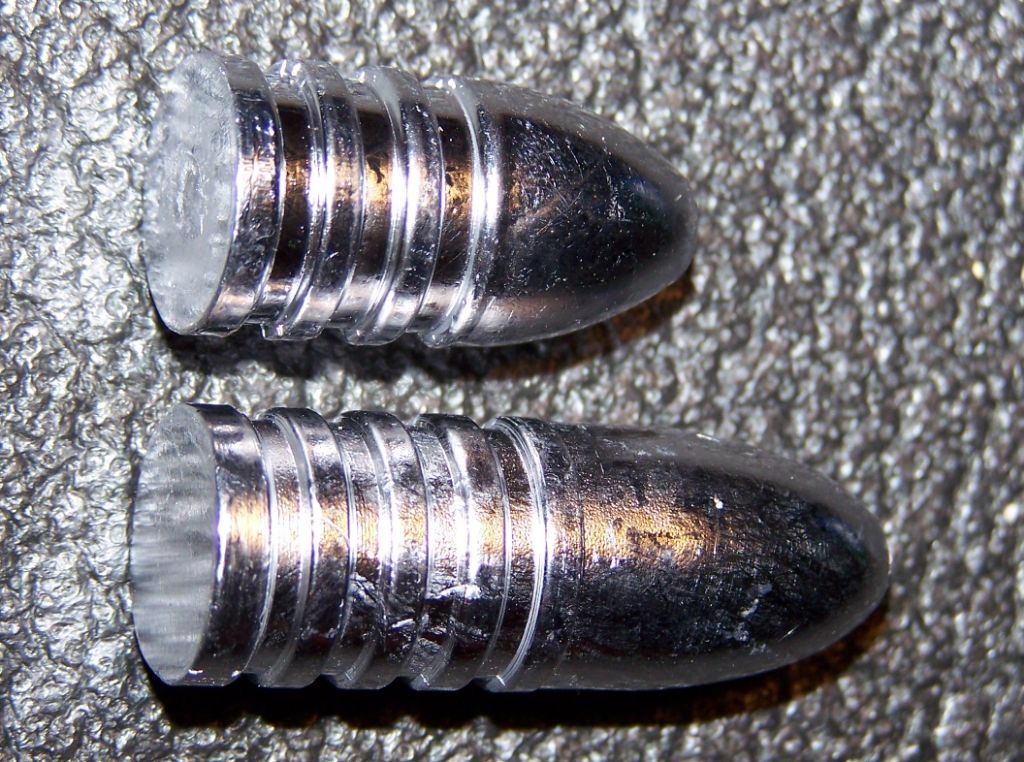

 The Accurate Reloading Forums
The Accurate Reloading Forums  THE ACCURATE RELOADING.COM FORUMS
THE ACCURATE RELOADING.COM FORUMS  Rifles
Rifles  Black Powder Cartridge Rifles
Black Powder Cartridge Rifles  Bullet stability calculator
Bullet stability calculatorGo  | New  | Find  | Notify  | Tools  | Reply  |  |
| One of Us |
| ||
|
| one of us |
According to the calculator, of the cast bullets I can now make, the NEI .512/780-grainer in soft lead would be best for accuracy in a 1:26" twist 50-90 Sharps, SF stays between 2.0 and about 1.7 for any muzzle velocity above Mach 1, from about 1150 fps to 4000 fps:  The .512/680-grain Hoch in 30:1 Lead:Tin is runnerup (for 1:26" twist) with SF of about 2.4 to 2.6 for muzzle velocities between Mach 1 and 4000 fps. That is the bigger bullet below. More practical for hunting accuracy and performance on game with a 50-90 Sharps:    Another champ for "accuracy SF" is the Lee .515"/450-grainer in 30:1 Pb:Sn, the lightweight above, in a 1:42" twist like my antique Trapdoor 50-70, SF stays between 2.1 and 2.4 for MV from Mach 1 to 4000 fps. | |||
|
| One of Us |
How about a little discussion? Does anyone here have a lot of experience using the stability factor calculators to chose bullets and design moulds. I am sure they work well when you know the stability factor that works for your application. For example at BPCR.net I ran into an old discussion that recommended the improved calculator at JBM calculator This is the same calculator shown at Berger's web site though Berger's GUI is simpler. The BPCR guys said that the best results seen at 1000 yards were with bullet barrel combos that had a stability factor of 2.4. Generally the calculators state that a stability factor of 1.5 is adequate. However they do not say to what distance 1.5 is adequate. Has anyone played with bullet design out to 1000 yards and compared the results to the SF calculators? | |||
|
| One of Us |
Greenhill's formula states Twist = 150 * dia.bullet 2/length of bullet If you measure the bore diameter and know the twist od the barrel, you can start fiddling with the stability factors, especially for long range. | |||
|
| One of Us |
The JBM and a few other calculators are far more advanced than Greenhill's formula. | |||
|
| One of Us |
RIP has a key word here when he says mach 1. Not many bp loads can stay above the speed of sound past the chicken line and most calculations were based on super-sonic loads. | |||
|
| One of Us |
This calculator recognizes the different conditions between sub sonic and super sonic. It appears that BPCR projectiles can wind up traveling most of the distance to the target in the transonic region. I am not sure what twist is supposed to be used for that. The geoffrey-kolbe calculator shows the trans sonic region in the twist plot. http://www.geoffrey-kolbe.com/barrel_twist.htm | |||
|
| Powered by Social Strata |
| Please Wait. Your request is being processed... |
|
 The Accurate Reloading Forums
The Accurate Reloading Forums  THE ACCURATE RELOADING.COM FORUMS
THE ACCURATE RELOADING.COM FORUMS  Rifles
Rifles  Black Powder Cartridge Rifles
Black Powder Cartridge Rifles  Bullet stability calculator
Bullet stability calculator

Visit our on-line store for AR Memorabilia

